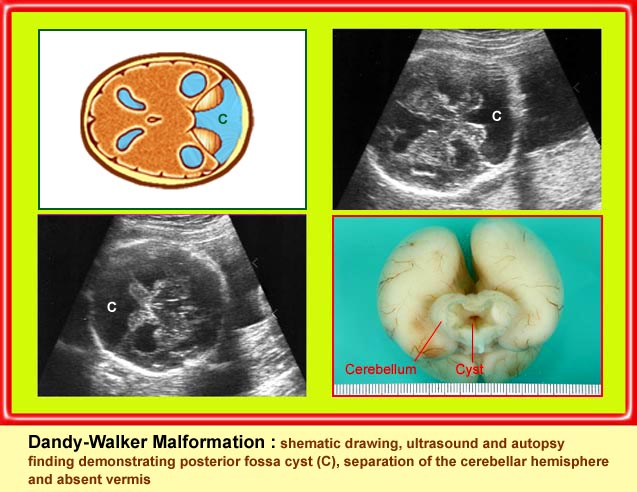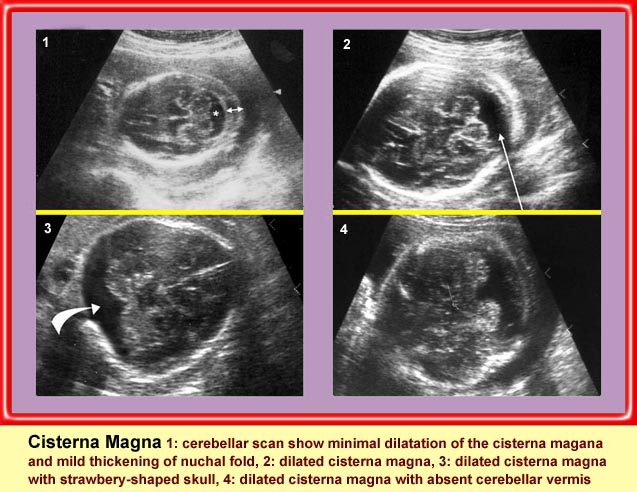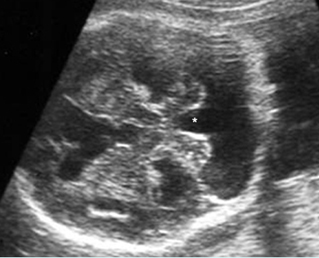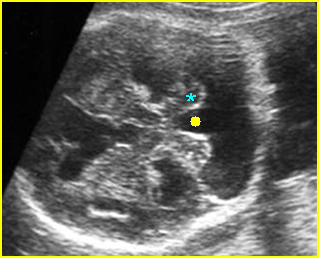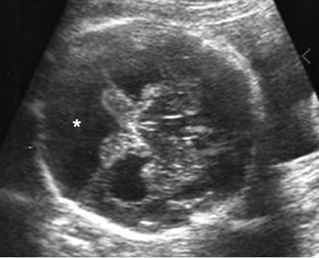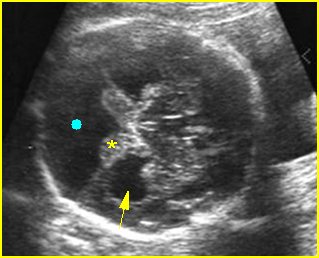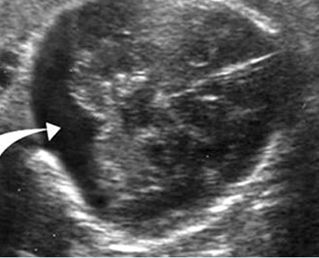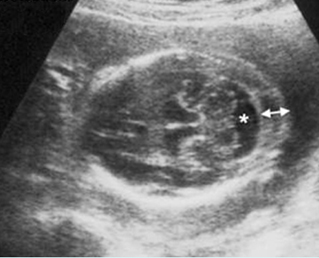Dandy-Walker Malformation (DWM)
บทนำ
DWM เป็นภาวะที่ cerebellar vermis หายไปบางส่วนหรือทั้งหมด ร่วมกับ fourth ventricle ขยายใหญ่เป็นถุงน้ำ posterior fossa มักขยายใหญ่ และ tentorium ถูกดันสูงขึ้น เข้าใจว่าเกิดจากพัฒนาการบกพร่องของหลังคา fourth ventricle ในขณะเป็นตัวอ่อน ซึ่งอาจเกิดจากโรคต่าง ๆ เช่น Meckel-Gruber syndrome, Walker-Warburg syndrome, trisomy 9, 18 การติดเชื้อ CMV, toxoplasmosis เป็นต้น 5-10 ของ hydrocephalus และร้อยละ 80 ของ DWM มี hydrocephalus มีน้อยรายถ่ายทอดทางพันธุกรรมแบบ X-linked ได้
ประมาณร้อยละ 80 มี hydrocephalus และร้อยละ 50 มีความผิดปกติอื่น ๆ นอกระบบประสาท ซึ่งที่พบได้คือ ACC, cephalocele, aqueductal stenosis, microcephaly, lipoma ความผิดปกติของ gyri ความผิดปกติของหัวใจ ใบหน้า ทางเดินปัสสาวะ และนิ้วเกิน
อัตราการตายสูง สติปัญญาบกพร่องพบได้บ่อยมาก ในรายที่ไม่มีความผิดปกติอื่นร่วมด้วยจะมีพยากรณ์ดีกว่าและมีพัฒนาการปกติได้จำนวนมาก
ลักษณะทางคลื่นเสียงความถี่สูง
- cerebellar vermis หายไปทั้งหมดหรือบางส่วน
- fourth ventricle ขยายใหญ่ขึ้น เป็น posterior fossa cyst ในแนวกลาง มีได้หลายขนาด และดัน cerebellum ไปข้างหน้าต้านกับ tentorium cyst นี้ไม่ควรสับสนกับ cisterna magna ปกติซึ่งจะมีขนาดกว้างไม่เกิน 10 มม.
- cerebellar hemispheres แยกออกจากกัน
- lateral ventricles โตได้บ่อย ๆ แต่ไม่เสมอไป (พบโดยคลื่นเสียงร้อยละ 50-80)
Dandy-Walker malformation
Transcerebellar view: posterior fossa cyst, separation of cerebellar hemisphere (*), absent vermis (solid circle)
Dandy-Walker malformation
Transcerebellar view: posterior fossa cyst (solid circle), separation of cerebellar hemisphere (*), absent vermis (arrow = associated ventriculomegaly)
Strawberry-shaped skull
Transverse scan of the skull: strawberry-shaped skull with dilated cisterna magna (arrow) (*cerebellum)
Mild dilated cisterna magnana
Transverse scan of the skull: mild dilatation of cisterna magna (*) with nuchal thickening (arrow)
Classic Images
